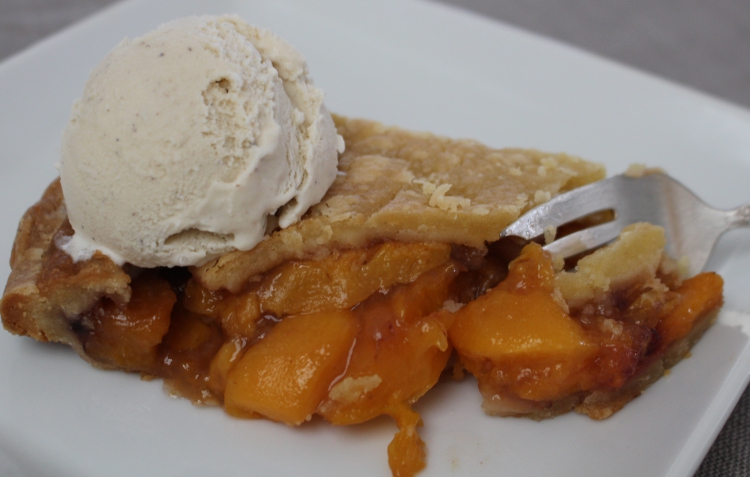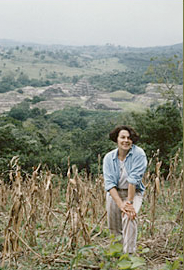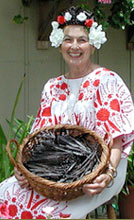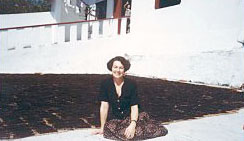
I'm amazed at how superior your vanilla is!
– Des, The Grommet

People ask me all the time how – and why – I became the Vanilla Queen. There’s a simple answer and there’s a longer story.
The simple answer: I’ve always loved vanilla and, as I have an inquiring mind, I wanted to learn everything possible about vanilla. What began as curiosity eventually led to devoting a large portion of my time to the promotion of this incredible tropical treasure and the people who grow it. And for that, I became known as the Vanilla Queen.
For those of you who are interested in learning more, here’s the whole story.
When I was a child I was both an avid reader and passionate about cooking. Through books I learned about exotic faraway countries and about people who dedicated their lives to assist the people living in developing countries. I knew that was what I’d want to do when I grew up. At five, in the kitchen, I discovered vanilla and fell under its spell. These two important passions came together in a unique way after I wrote The Vanilla Cookbook in 1985.
The idea for writing the book was conceived when a friend gave me a Wall Street Journal article about King Taufa’ahau Tupou IV of Tonga and the dilemma of a vanilla crop harvested too early. Hank Kaestner, who purchased spices and flavors for McCormick & Company was looking for new sources of vanilla. Vava’u, the northern island of Tonga had the perfect growing conditions, but the workers were accustomed to growing and drying sisal and coconut meat — fast crops with quick pay. As vanilla takes nearly a year to mature, they grew restless and harvested it too early, which made it nearly worthless. Hank struck a bargain. He went to the King and asked him to issue a royal decree forbidding the harvest till the beans turned gold at the tips. In exchange, McCormick would buy the entire crop. He did, they did, and Tonga started producing lovely vanilla.
The story intrigued me. I called Hank Kaestner the next day. After providing me with one amazing fact after another, I was so intrigued that I asked if any books had been written on vanilla. He said there were none, and that I should perhaps write the book. So I did. Unfortunately, my circumstances at the time didn’t allow for the luxury of on-site research in tropical Mexico or in any of the other exotic locations where vanilla is now grown. Instead, I interviewed the vanilla traders and extract manufacturers and created the book largely around their experiences and expertise.
 The Vanilla Cookbook came out in 1986. No one had ever combined vanilla’s history, botany, lore and food into one book, so it created interest in the culinary and academic worlds. I spoke at conferences and culinary programs and promoted vanilla at special events. Then, In 1992, I was invited to speak at the quincentennial celebration of foods of the Americas in Puebla, Mexico. My opportunity had finally arrived.
The Vanilla Cookbook came out in 1986. No one had ever combined vanilla’s history, botany, lore and food into one book, so it created interest in the culinary and academic worlds. I spoke at conferences and culinary programs and promoted vanilla at special events. Then, In 1992, I was invited to speak at the quincentennial celebration of foods of the Americas in Puebla, Mexico. My opportunity had finally arrived.
After the conference, I got on a bus and headed for Vera Cruz, the hub of the Mexican vanilla growing industry. Even though I knew no one, I was determined to see for myself the vines, the beans, the magic. For seven years I had imagined Papantla and envisioned myself the intrepid adventurer sweeping into this jungle paradise. In reality, I was pretty nervous about heading off alone into the tropics with nothing more than a map of Mexico as my guide.
Amazingly enough, in the bus station I met another American anthropologist who knew Vera Cruz well. He offered to introduce me to the region, so I relaxed and settled in for the six hour trip to the Gulf Coast. The bus climbed high into the Sierra Madre Oriental with its trees shrouded in mist, wound around hairpin turns, dodged ancient trucks carrying oranges and pine logs and slowly descended into the tropics. We first passed agave plants in the high desert, then trees bearing apples, peaches and plums. Further along there were coffee plants heavy with cherries, then papayas, bananas, and pineapples, and bromeliads and orchids growing from tree branches. I was captivated by everything I saw along the way.

The anthropologist very graciously put his own work on hold and traveled with me throughout the region, providing a condensed, but detailed history, of Mesoamerica. It was an insider’s tour of the region with useful information on how to maneuver through Mexico on a minimal budget.
The day we visited the ruins of El Tajin in the hills outside of Papantla, we took along with us the six year-old granddaughter of my friend’s Mexican family. Just before we left Papantla, there was a curious occurrence that I didn’t fully understand until much later. The little girl, Citlali, looked up toward the sun and pointed in amazement. An enormous, perfect ice ring encompassed the sun, vivid in the pale yellow sky. People came out of stores and homes and also stared up at the sky, pointing and talking among themselves. We joyfully declared it an omen – perhaps even auspicious – then went on our way. It wasn’t until recently that I learned that ice rings around the sun are quite rare in the tropics. What had seemed like a pretty normal event to me was admired and awed by people who had rarely – if ever – seen a ring of ice around the sun.
 I now like to believe that it was a sign of welcome from the ancient gods of the Totonaca — maybe Tlaloc, the god of rain, or perhaps even Princess Tzacopontziza, goddess of the vanilla. Certainly the events that have occurred since seem to have been heralded by this curious phenomenon.
I now like to believe that it was a sign of welcome from the ancient gods of the Totonaca — maybe Tlaloc, the god of rain, or perhaps even Princess Tzacopontziza, goddess of the vanilla. Certainly the events that have occurred since seem to have been heralded by this curious phenomenon.
The roads were far worse then, so we jostled our way to the ruins in suffocating heat and voluminous dust clouds. The ruins, a cultural and architectural bridge between the early Mesoamerican cultures and the Aztec, were still rustic as they weren’t yet famous — as they now are – for being one of the important Pre-Columbian sites in the Americas. The heat grew more oppressive as we trekked through the ancient city of El Tajin (thunder bolt), and we left just as a summer storm exploded in the sky. This was appropriate given the city was built in honor of the rain gods and is considered the City of Spirits by the Totonacas.
 The following day we returned to Papantla. After exploring more of the town and talking with Totonacas in the plaza about vanilla, we returned to a little restaurant we had visited the day before for roasted chicken and beer. This time the owner took us to meet his family and a multi-generation family that braids the most supple of the vanilla beans into intricate decorative ornaments. Late that day, I said my goodbyes to everyone and continued on my journey through southern Mexico, feeling elated. I carried with me the fragrant memory of Papantla encompassed in a small vanilla bean ornament. I felt such delight at having experienced a small bit of a town I had written about seven years earlier.
The following day we returned to Papantla. After exploring more of the town and talking with Totonacas in the plaza about vanilla, we returned to a little restaurant we had visited the day before for roasted chicken and beer. This time the owner took us to meet his family and a multi-generation family that braids the most supple of the vanilla beans into intricate decorative ornaments. Late that day, I said my goodbyes to everyone and continued on my journey through southern Mexico, feeling elated. I carried with me the fragrant memory of Papantla encompassed in a small vanilla bean ornament. I felt such delight at having experienced a small bit of a town I had written about seven years earlier.
The story could have ended there, except for a burning desire to return that wouldn’t go away. So, in October of 1994, I again flew to Mexico City, and again traveled through the mountains and into the tropics to Papantla. My plan was to do extensive research on the Mexican vanilla industry and the Totonacas, the first growers and traders of vanilla. I was really nervous this time. I wondered who would be willing to talk with an unknown American woman getting off the bus in a not very tourist-traveled region of Mexico.
I trudged up the hill from the bus station to the restaurant of the roasted chickens. The owner of the restaurant greeted me and later introduced me to an American friend of Mexican heritage. He asked him to take me to meet the local vanilla growers. The American could hardly believe that I had traveled alone from Northern California to Mexico City and then by bus “to this god-forsaken place” (his words) and that I was there to do research. But he was enough of a gentleman to accept that there’s no explaining women’s eccentricities, and he took me off in his four-wheel drive vehicle to meet the growers.
Since Papantla is usually dizzyingly hot during the day, people do as little as possible in the afternoons, then take to the streets from early evening until midnight, eating, sharing news, gossiping and entertaining. It was now around 8:00 pm, so chances were, people would be outside. When we got to a small shop, my guide hollered to his friend to come meet “this woman who’s doing some research about vanilla or something – anyway, her name’s Patricia Rain.”
His friend, whose family has been in the vanilla industry for generations, stepped out of the doorway. When he heard my name, his mouth dropped open in astonishment. “Patricia Rain? La Patricia Rain?” he asked. Then, “Oh, please, come in, come in, I have your book, I want you to sign it!” It was all I could do to keep from bursting into laughter. I had been so worried, so tense. Now this strange turn of events — All the growers had my book!
Suddenly I wasn’t just anyone; I was “La Patricia Rain” famous in nearly the very same way as La Joanne Wilder in Romancing the Stone! Totally unbeknownst to me, I was already a bit of a celebrity.
It turns out that a number of years earlier, the very same Hank Kaestner from McCormick and Company had taken copies of my book to the town of Gutierrez Zamora where most American vanilla traders buy Mexican vanilla, and had given them to one of the prominent local families, who then passed out copies to other regional growers. No one spoke English so they couldn’t actually read my book, but they could pick out my references to their towns and industry, and they knew I was writing favorably about them. I was their voice to the world!
So there, in the sweaty tropical heat of the Gulf Coast, signing dog-eared, vanilla-stained copies of my book, I experienced an epiphany. It was my destiny to support and promote, not only pure vanilla, but also those who grow it — to bring a new awareness about vanilla to the world! And, it was in this way that I found my calling as the Vanilla Queen.
I was adopted by the Mexicans of Totonacapan. Over time, I have recorded the stories of the indigenous people who first grew vanilla and the Europeans who developed new ways to cure and dry it. I have tracked its travels around the world, gathered the legends and myths, collected recipes and the unique uses shared by its tropical growers. I have continued to experiment with it in my kitchen and invited cooks and chefs along the way to share their recipes. My book, Vanilla: The Cultural History of the World’s Favorite Flavor and Fragrance, was published in 2004.
The story didn’t end there either. After launching The Vanilla Company in 2001, farmers from around the world who could read English and who had access to the Internet, visited my site and wrote, asking for assistance and sharing their stories. (Farmers often travel hours over non-existent roads to the nearest Internet café for information and to seek buyers.) Out of this came more stories for my book, Vanilla. In 2005 I created the International Tropical Farmers Network (ITFN) an advocacy and support group for tropical farmers.
In late 2003 I was diagnosed with very advanced breast cancer. As word spread, these same farmers began to pray for me and still continue to pray for my health and well-being! As I write this in 2013, nine years after my diagnosis, I have no evidence of disease. I truly believe that the love and support of so many people around the world, assisted in my miraculous recovery.
This is how I became the Vanilla Queen. It is the most exciting job I’ve ever had. I travel to tropical countries and islands around the world, wear a vanilla bean crown, and have the privilege and joy of sharing the stories, the lore, the myths, and the truth about vanilla and other tropical products with you.
While I love to joke about my life as the Queen, the reality is that the small family farms that produce much of the luxury crops from the tropics, have labored under difficult circumstances and with minimal wages so that you and I may have the spices, the fruits, the flavors and much more that we use daily and assume will always be there for us to enjoy. We owe it to these growers and to our planet to support them and the lands where we live.
I thank you on the behalf of the growers in the tropics worldwide, as well as the ancient gods and goddesses who live on through legends and myths, for purchasing sustainably grown tropical products for which an ethical price has been paid. Please help us to heal and strengthen the tropics for the benefit of us all.
Patricia Rain, Vanilla Queen
I was given a small bottle of Rain’s Choice in a gift basket and I have been hooked ever since. The flavor makes all of my baking so much better! I will never use grocery store vanilla again!
© 2021. All Rights Reserved
Designed/Developed by Kat & Mouse